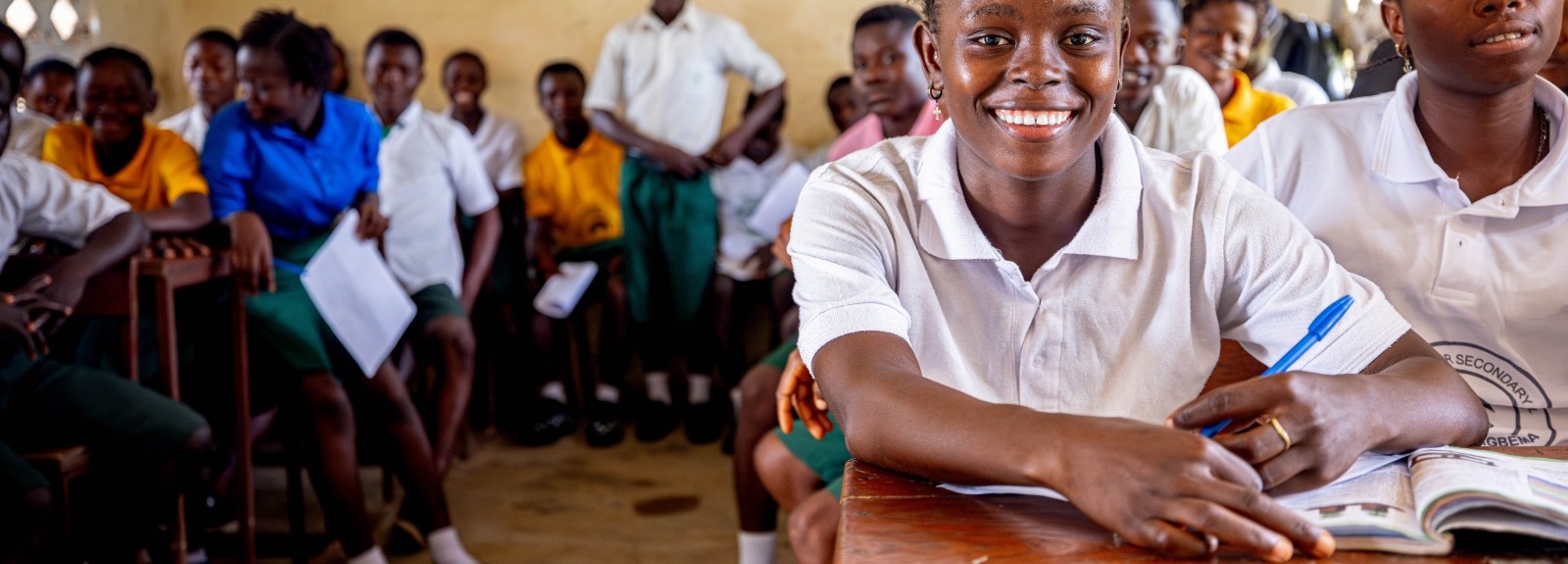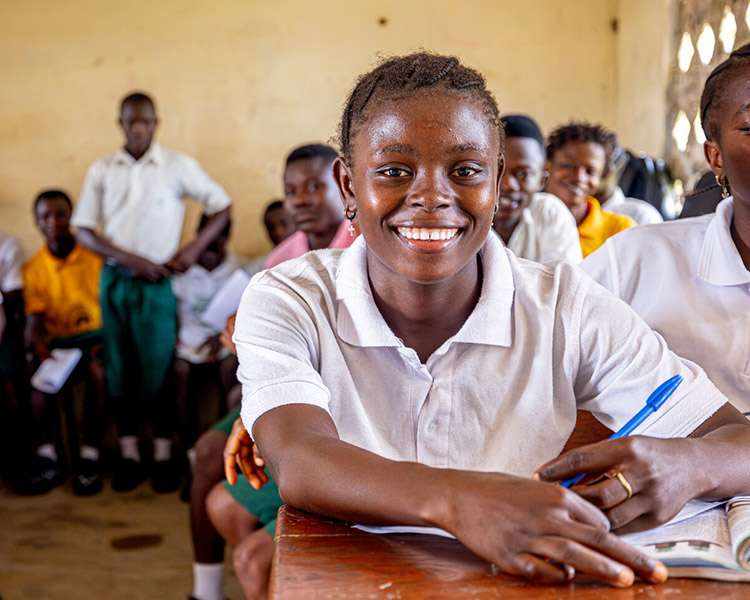Mary is 15 years old and currently enrolled in school in Sierra Leone — but she’s at risk of dropping out. Mary, like so many other girls around the world, is up against some big challenges.
Read on to learn more about the challenges they face and what you can do to help.
And, if you took our quiz, you’ll see the answers below.
1. Globally, more than 122 million girls are not in school around the world (quiz answer C).
That’s more than the entire populations of France and Spain combined.
Why are so many girls not in school?
The answer can be complicated, and there are often several reasons why a girl isn’t able to attend school — but there is one reason that accounts for most situations: poverty.
Mary lost both her parents within a year, leaving her in the care of her stepmother, Yanki. Yanki, who has children of her own and cares for four others, including Mary, works tirelessly to support the large household. Though financially strained, Yanki is determined to provide an education for every child in her care. “Since I didn’t have the opportunity to go to school, I don’t want them to end up like me, as an illiterate,” she says.
2. Poverty — or lack of income — is by far the largest barrier to education (quiz answer D).
In fact, in Sierra Leone, where In School operates, more than half of families report that lack of income keeps children out of school.
Other barriers include cultural attitudes toward girls, child marriage and pregnancy, disabilities, and distance to school.
These barriers share common ground, though. They all lead back to lack of income. Parents feel the financial burden twice: first in the cost of school fees, uniforms and supplies, and second in the loss of income when their daughter attends school instead of working or marrying into another family.
3. In Sierra Leone, 1 out of 3 girls who start school drop out by the age of 12 (quiz answer B).
Unfortunately, a girl’s family situation or financial situation can change quickly and dramatically, meaning a girl who was able to attend school may suddenly not have the opportunity any longer.
What’s more, as girls get older and approach their teen years, it becomes increasingly difficult for them to continue their education. Families may find it necessary for them to work and earn income or marry into another family. This means girls are trapped in a cycle of hardship and missed opportunity. In Sierra Leone, 1 out of 3 girls marries in her teens or younger, and 1 in 4 is pregnant by age 19.
For Mary, life took an unexpected turn at the age of 13. Financial hardship led her into a relationship with a boy who promised to take care of her. Soon after, she became pregnant. Without the means to support Mary and their child, the boy abandoned her. Forced to drop out of school, Mary spent the next three years gathering and selling wood just to afford food and basic essentials for her child.
Here at In School, we are committed to helping girls start school and helping girls stay in school. And we are proud to partner with the government of Sierra Leone because they are firmly invested in improving girls’ access to quality education nationwide. Monthly cash assistance helps girls stay in school because families can offset school-related expenses, including the loss of income when a girl attends school instead of working.
4. For every additional year a girl can stay in school, her earning potential as an adult soars by 20% (quiz answer C).
Girls who get an education earn more, are better able to care for and support their family and contribute more to the local economy.
On average, educated girls are less likely to be abused or face discrimination, marry later, are less likely to die in childbirth, and raise healthier, better educated children.
Today, Mary is back in school but her path back to school hasn’t been easy. She often lacks the materials she needs for class and sometimes goes without lunch. To save money, she walks an hour each way to school, even in the rain. But Mary’s commitment remains unwavering. “I don’t have anything, but I don’t care about that. I need education,” she says.
The data is clear: The best place for a girl to spend her time is in school.
You can ensure girls like Mary don’t just step into a classroom, but stay there, thrive there, and unlock the life-changing power of education.


